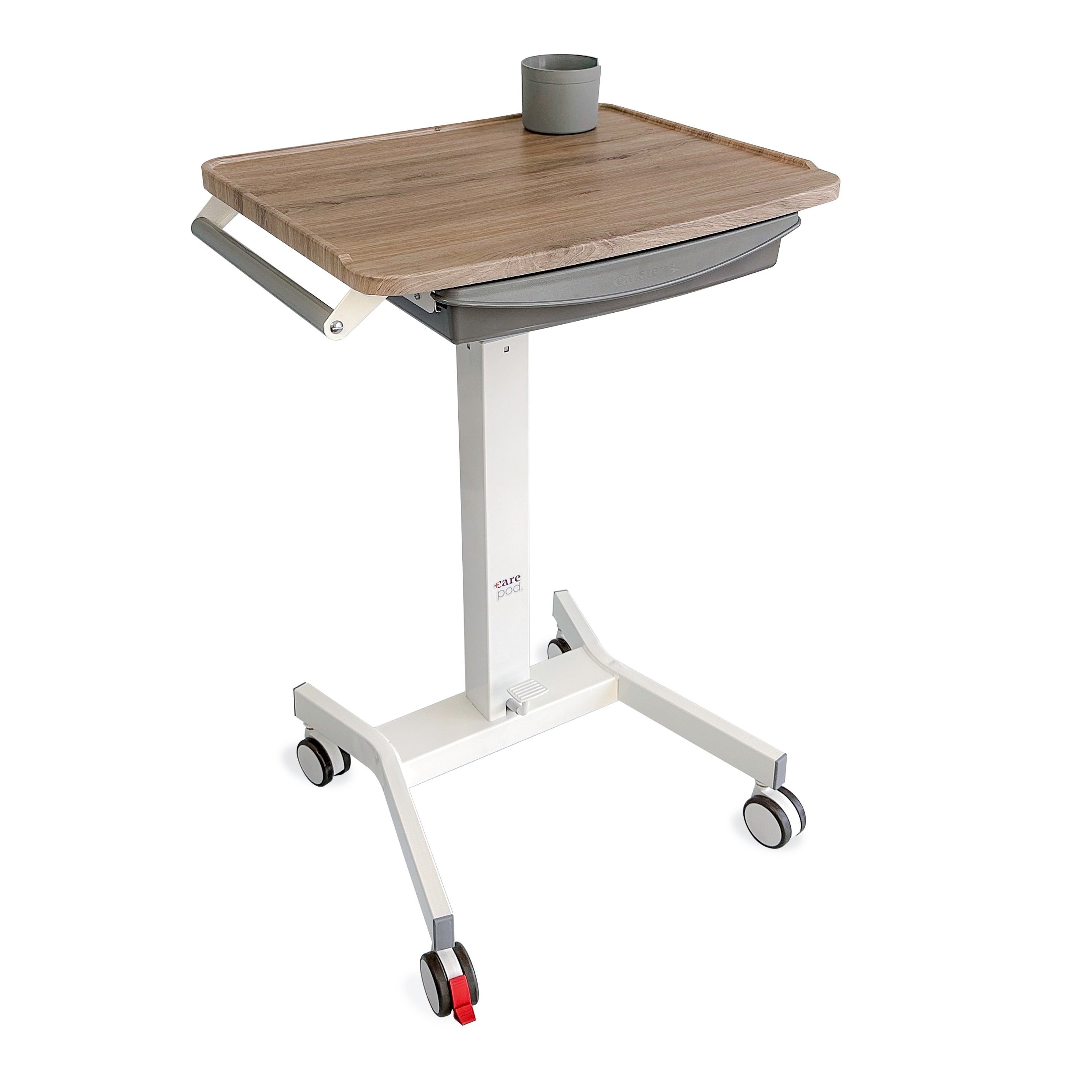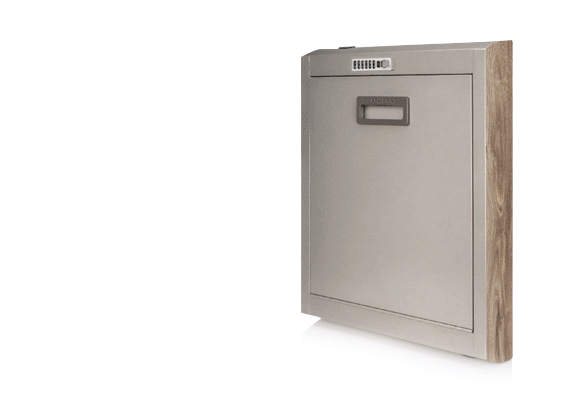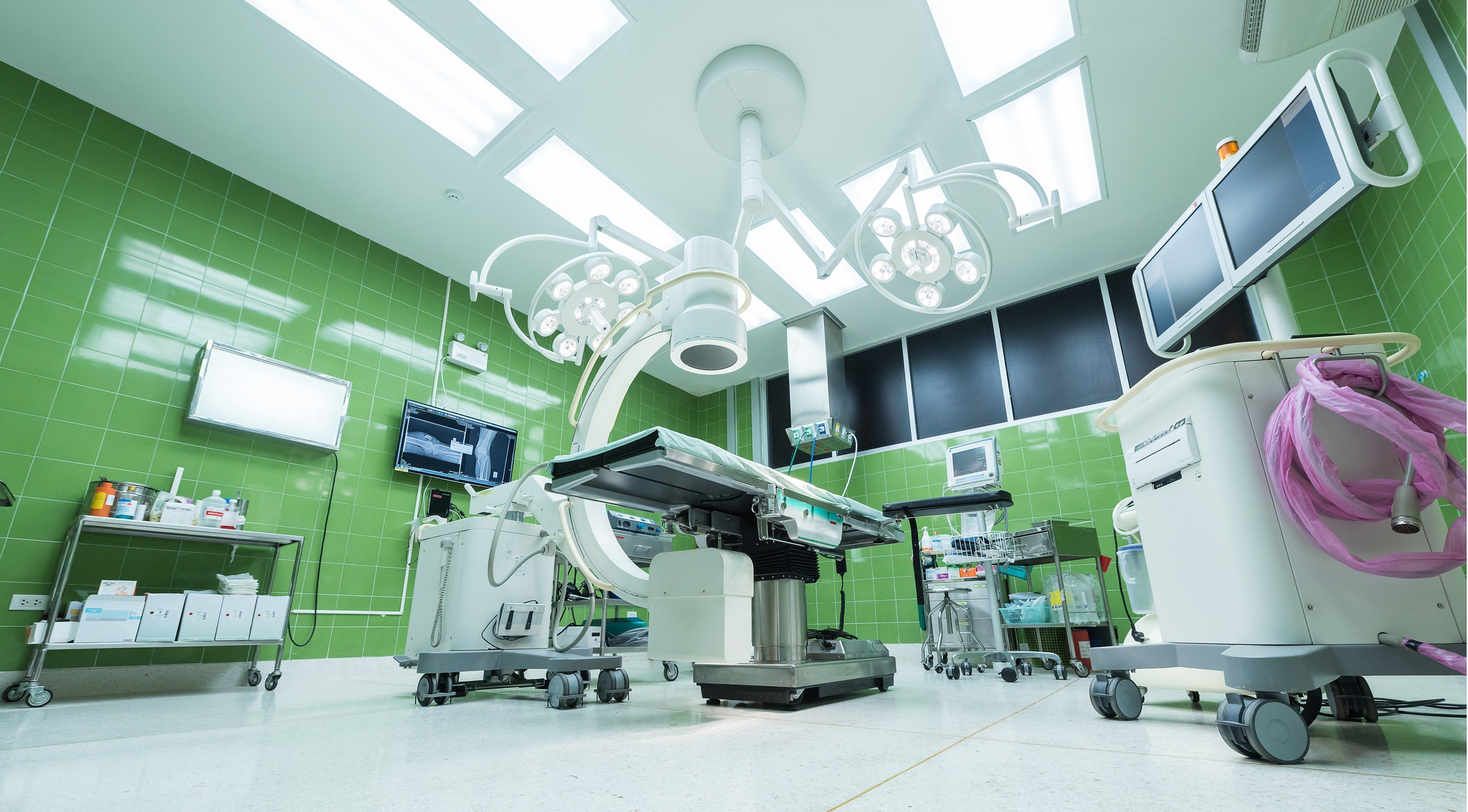If your healthcare facility is considering whether to purchase mobile workstations for nurses to input and track patient information or establish fixed location workstations, we're here to help. In this article, we will define each and look at its advantages and disadvantages to help you determine which is best for your facility or organization.
Related: Steps Hospitals Can Take to Better Utilize Their Workspace Post Covid
What Is a Fixed Location Workstation?
A fixed location workstation is storage for medications, PPE, medical supplies, and electronic health record (EHR) equipment. These workstation units are located at the point of care (in-room, or a nearby location like a hallway), conveniently available for the nurse or other medical professional. These may be a wall cabinet or wall arm and are usually used as part of a room-centric approach.
These are a space-saver as they are fixed to the wall and combine storage with a fold-down worktop. They may be installed almost anywhere in a facility. And they can be stocked with precisely what is needed for the patient at any given time, reducing medical admin time significantly.
What Is a Mobile Cart Workstation?
Mobile cart workstations consist of a laptop desk on wheels, storage compartments, and may or may not have an attached stool. They work well for dietary or nurses' aides' carts and also as treatment carts, medication admin carts, and rounding carts. Having a desk on wheels means nurses can work wherever they are needed.
A mobile cart workstation works well where there is a high nurse-to-patient ratio. They are provided to nurses rather than to each room and work as part of a nurse-centric approach. Because nursing happens in 24/7 cycles, the mobile units will need to be charged during working hours. So any facility that uses these will need to have enough additional units to allow for some to be charging while others are in use.
Related: How New Nursing Technologies are Transforming Patient Care
Are you looking for high-quality mobile carts and mounted workstations for your medical facility? Take a look at the large selection of superior products offered by the experts at Carstens today to learn more.
What Is the Difference Between a Fixed Location Workstation and a Mobile Workstation?
Here are the key of the differences between each type of workstation:
Mobility:
- Fixed location workstations are immobile. This is a major benefit for practitioners who don’t have to move around frequently. They will have access to a well known, dedicated workstation that they can immediately locate.
- Mobile workstations are able to transport needed equipment and information from room to room and from patient to patient.
Costs:
- Many fixed units that are not only for medical storage will need to include a PC monitor and all the supporting equipment, including a keyboard, mouse, barcode reader, and software licenses.
- Depending on the number of rooms in a medical facility vs. the number of nurses and doctors, the cost benefits of having fixed vs. mobile workstations can alter. It may be more cost effective to purchase mobile units to be used by each medical practitioner, rather than to pay for the installation of fixed workstations in every room if there are more rooms than practitioners. Medical facilities will need to consider these factors carefully before making their decision to purchase either.
Flexibility:
The layout of patient rooms will have to be considered when determining whether fixed or mobile workstations can be used.
- Fixed units are best used on the headwall on the door side of the room because it fits with the natural flow of traffic as the nurse enters the room. The correct positioning of the unit also aids in face-to-face interaction between the nurse and patient while charting. However, if the room's layout doesn't allow for this placement of the fixed workstation, it can impede the effective treatment of the patient or make work challenging.
- If the room layout is conducive, a fixed unit in the room is a convenient and sleek option. A mobile unit may feel cumbersome at times.
- Mobile workstations can be moved to the bedside of the patient and used wherever there is wireless connectivity.
- Mobile workstations allow nurses to chart a patient's progress immediately. In turn, because the patient's information is instantly accessible, the nurse has all the information they need when making patient-care decisions.
- Mobile workstations can provide a greater sense of empowerment and flexibility for nurses.
Availability:
Any hospital or facility will have planned and unplanned maintenance on equipment.
- In the case of fixed location workstations, maintenance on equipment in occupied rooms can compromise the privacy and comfort of the patient. Or the patient may be moved during the maintenance, but this can be equally uncomfortable for them and delay much-needed maintenance.
- In the case of mobile cart workstations, while maintenance is carried out on the equipment, loaner or spare equipment may be used. Non-medical staff will not have to be given access to patient rooms. This means that the facility needs to have access to additional units and equipment, which could be an additional cost factor.
Related: Charting in Healthcare: Why it Matters
Should I Use a Fixed Location Workstation or a Mobile Workstation?
Each kind of workstation offers its own advantages. Many medical facilities will find they require the use of both types of workstations - fixed location and mobile cart. This will enable them to optimize workflow for the staff as well as patient care. A combination of the two can be cost-effective for the facility - providing precisely what is needed where it's needed.
Whatever your medical supply or equipment needs check out the products at Carstens. Our goal is to improve the quality of care across the entire healthcare industry.






